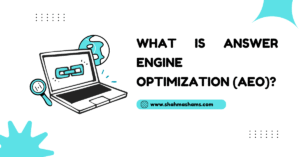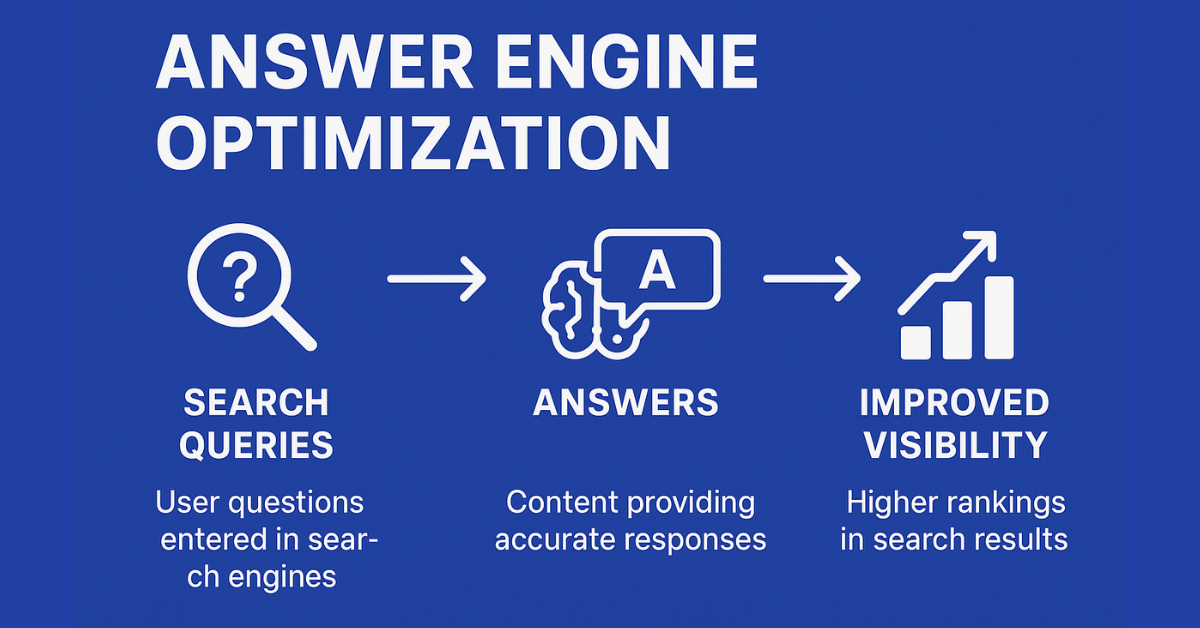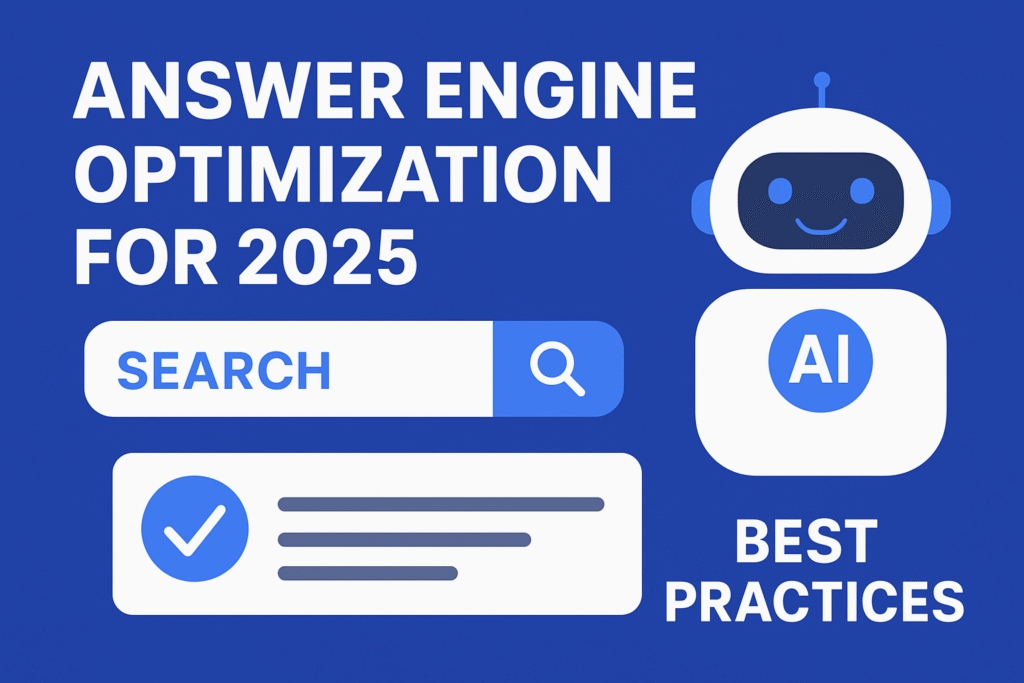Search habits in 2025 look very different from a few years ago. Instead of typing questions into Google and scanning pages of results, more users now turn to AI assistants like ChatGPT, Gemini, or Copilot, which deliver direct answers instantly. These tools are called answer engines because they provide one clear response instead of a list of links. For businesses and marketers, this shift creates a new challenge. How can you make sure your content is the one chosen as the answer? The solution is Answer Engine Optimization.
In this guide, we will look into what Answer Engine Optimization means, why it is becoming important in 2025, how it compares to traditional SEO, and the best practices you can follow to make your content stand out in the world of AI search.
What is Answer Engine Optimization?

Answer Engine Optimization (AEO) is the process of creating and structuring content in a way that makes it easy for AI answer engines to understand, cite, and display. Instead of competing for rankings on search engine results pages, your goal is to provide clear, trustworthy, and direct answers that answer engines can use when responding to users.
The key difference is simple. Traditional SEO aims to drive clicks. AEO aims to be the source of the answer. In 2025, being cited by AI tools can bring more credibility and visibility than ranking number one on Google.
Why Answer Engine Optimization Matters in 2025?
There are three main reasons why Answer Engine Optimization is so important today.
1. User behavior has changed
People are no longer searching the way they used to. Instead of typing “best skincare routine for oily skin,” many now ask AI tools, “What is the best skincare routine for oily skin?” The expectation is not to browse but to get one clear response.
2. Competition for attention is increasing
As more brands adopt AI-friendly strategies, only a few will be cited as sources by answer engines. If you are not preparing now, you risk being invisible when users shift fully to AI-first search.
3. Trust and authority build loyalty
Being mentioned by an answer engine is a sign of credibility. Users trust answers that come from authoritative sources. Answer Engine Optimization positions your brand as an expert in your field.
AEO vs SEO
While Answer Engine Optimization is often compared to SEO, the two are not the same. Here are the key differences.
Focus of SEO
-
Ranking on Google search pages
-
Using keywords, backlinks, and technical improvements
-
Driving organic traffic
Focus of AEO
-
Providing direct, clear answers to user queries
-
Structuring content in conversational formats
-
Building topical authority and credibility
-
Becoming the preferred source for AI-driven responses
Think of SEO as winning space on the page, while Answer Engine Optimization is about winning the answer itself.
Best Practices for Answer Engine Optimization
If you want your brand to appear as the source in AI-generated answers, you need to follow specific strategies.
1. Write conversational content
Answer engines are designed to process natural language. Write your content in the same way people ask questions. Instead of long, complex sentences, use short, clear statements.
2. Provide direct answers at the top
When someone asks, “What is Answer Engine Optimization,” the first two or three sentences should give the exact answer. After that, you can expand with details, examples, and explanations.
3. Use structured data and schema
Structured data helps machines understand your content. Adding schema markup for FAQs, products, and reviews increases the chances of being picked as the best answer.
4. Cover topics in depth
Answer engines prefer authoritative sources. If you write one small blog post about a topic, you may not stand out. Instead, create detailed guides, case studies, and related content that establish your expertise.
5. Keep your content updated
AI models are trained on the latest information available. AI systems favor the freshest data, which means older, unchanged articles are less likely to be referenced as trusted answers. Regularly update your blog posts, statistics, and case studies.
6. Add trust signals
Always include author bios, references, and links to credible sources. Transparency increases your chances of being considered reliable by answer engines.

How to Optimize Content for Answer Engines
To optimize content for answer engines, follow these steps:
-
Research questions people are asking. Tools like SEMrush, AnswerThePublic, and Google’s “People Also Ask” can help.
-
Use your focus keyword in titles and headings. This makes it clear what your content is about.
-
Add FAQ sections. Short, direct answers in an FAQ format are highly valuable for Answer Engine Optimization.
-
Include multimedia. Images, videos, and charts can improve user experience and provide more context.
-
Write summaries. End sections with short summaries that restate the answer in simple terms.
Challenges of Answer Engine Optimization
Like any new trend, Answer Engine Optimization has challenges.
-
Measuring success is harder. Unlike SEO, where you track clicks and impressions, being cited in an answer engine may not always bring measurable traffic.
-
Competition is high. Many brands will fight to be the one mentioned.
-
Reduced clicks. If the answer is given directly in the AI tool, users may not visit your website.
The key is to balance your efforts. Use Answer Engine Optimization to build credibility, while continuing to use SEO to bring steady traffic.
The Future of Answer Engine Optimization
Looking ahead, Answer Engine Optimization will become an essential part of digital marketing.
-
Integration with Generative Engine Optimization (GEO). This is the next stage, where businesses optimize not just for answers, but for AI-generated summaries and recommendations.
-
Stronger focus on authority. Brands that build expertise will dominate citations.
-
Rise of zero-click content. Much like featured snippets, more answers will appear without clicks, making authority more valuable than traffic.
Real-Life Examples of Answer Engine Optimization
-
Health blogs. Instead of long posts filled with keywords, top health sites now include direct, science-backed answers to common health questions.
-
E-commerce brands. Some online stores optimize their product FAQs so that answer engines directly recommend their products.
-
Education websites. Many learning platforms create concise definitions and explanations so that AI tools use them as references.
How Businesses Can Prepare for Answer Engine Optimization
-
Start by rewriting your old content in a question-and-answer format.
-
Audit your website for structured data.
-
Build authority by publishing content clusters around your main topics.
-
Focus on clarity, not length. Long blogs are useful, but the key is clear and direct answers.
Conclusion
Answer Engine Optimization is not just another marketing buzzword. It represents the shift from search to answers. In 2025, people want fast, reliable, and direct responses, and AI-driven tools are meeting that demand. Businesses that use Answer Engine Optimization early will strengthen their authority and ensure they remain discoverable as AI-driven search takes over.
If you want your brand to thrive in this new environment, start focusing on creating content that is simple, conversational, and trustworthy. The future of search is not about ranking, it is about being the answer.
Need help building an AEO-friendly strategy? You can explore more about my digital marketing services at shahmashams.com

